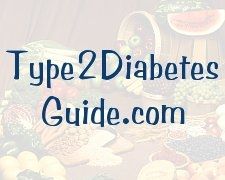Diabetes Diet Sheet - A Starting Point for Diabetics
Carbohydrates
People with diabetes need to keep their blood sugar levels within a target range set by their doctors. Many people believe that diabetics cannot consume foods with carbohydrates, since all types of carbs will raise blood sugar. However, a healthy diet includes carbohydrates. Not all carbohydrates are equal, though. Aim to consume high-fiber, complex carbohydrates such as whole grains, which break down at a slower pace. This allows for a slower release of nutrients into the bloodstream. Simple carbs like white bread or a sugary soda pop will raise blood sugar much more quickly, and can result in a blood sugar "spike".
The amount of carbohydrates consumed per meal or per snack should be approximately the same. Sugary snacks and sweets should be minimized as well (they need not be avoided completely, but do need to be limited). These also help to to avoid big "swings" in blood glucose.
One way to choose foods is to use the glycemic index. The GI is a method of classifying foods that contain carbohydrates according to the effect they have on blood sugar after being consumed. Many people find the glycemic index a useful planning tool.Food Choices
There is no need to purchase special "diabetic-friendly foods." An example that is recognizable by many people are snacks sweetened with artificial sweeteners. Stick with a healthy, natural diet and try to avoid or minimize consumption of overly processed or refined foods -- including those specifically marketed to diabetics. Good food choices include:
- Whole grain breads and cereals.
- Oatmeal.
- Fresh, frozen, or canned fruits and vegetables (canned fruits & veggies should be packed in water or natural juices, with no added sugar).
- Low-fat cheese.
- Yogurt.
- Skim milk.
- Lean cuts of meat, such as fish and skinless chicken breasts.
The diabetes food pyramid is a good visual tool to help understand how to plan our meals. Note the portion sizes; many people who first see the portions are surprised at how small a "portion" really is. A dietitian can help you incorporate your favorite foods into your eating plan.
Eating Regular Meals
A regular eating schedule of meals and snacks helps to keep your blood glucose
levels more stable throughout the day, avoiding big fluctuations in blood
sugar. If you're taking oral
diabetes medication
or insulin, a schedule also makes it easier to figure out the dosage you need to
keep your blood sugar in the target range. Be sure to
monitor your blood glucose levels
and record them in a log book Limit consumption of salt, saturated fats, and alcohol. Diabetics are more
prone to high blood pressure (hypertension)
and salt can aggravate this condition.
Saturated fats, like butter or lard raise cholesterol levels.
Choose polyunsaturated or monosaturated fats instead, like olive oil or sunflower oil.
Nuts and proteins also contain fats. Saturated fats can be found in foods like
beef, egg yolks, and cheese. Some types of nuts (pecans, cashews, almonds) are
a good source of polyunsaturated or monosaturated fats, as is fish.
Alcohol and any type of fat are high in calories, so should be used sparingly.
Consuming too much of any food, including alcohol and fats, can lead to weight
gain and further insulin resistance.
The best ways to prepare foods include baking, roasting (use a drip-pan
so that the fat can drip off the meat), broiling, grilling, steaming, and
stir-frying (use homemade broth or low-sodium broth for flavor, instead
of using butter). Cut off fatty portions of meat. Grate cheese and use
a sprinkle for flavor. Don't add salt. To add bulk without a lot of extra
calories, cut up your favorite vegetables and add them to your meal.
Many diabetes recipes
and cookbooks A body's sensitivity to insulin decreases as weight increases. Thus
it's important for diabetics in particular to make sure their weight
is under control: lose weight
if you're overweight, or maintain your weight if you're already at a healthy weight.
Portion control,
a healthy diet, and regular exercise can all help with weight loss. Weight loss should be done in a safe, slow, and
sustainable manner. A 1-2 pound weight loss per week is generally safe.
One pound is the same as 3500 calories, so if you were to eat 500 fewer
calories per day for a week, you would lose 1 pound.
This diabetes diet sheet offers a starting point. You should always
consult with your healthcare team -- including doctor, diabetes educator,
and dietitian -- about your individual needs.
.
The log book can be handy to pinpoint unusual fluctuations (add notes where needed)
and to show your doctor or diabetes educator.
Salt, Fats, and Alcohol
Food Preparation
A healthy food can be made unhealthy during preparation. For example, a
zucchini by itself is a healthy food, but if you deep-fry it in batter, it's
not so healthy anymore.
are available to give you inspiration.
Portion Control
What Causes Diabetes?
Insulin Resistance
Signs of Diabetes
Hypoglycemia
Hyperglycemia
Glycemic Index
Diabetic Recipes
Feline Diabetes
Diabetes Diet Sheet
How to Control Diabetes Without Medication
What Foods Have a Low Glycemic Index?
Conversion Chart for Blood Sugar Levels






